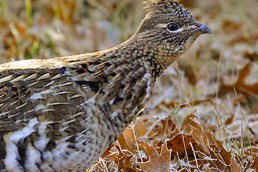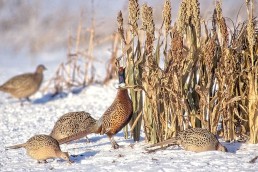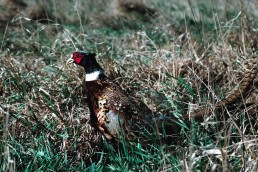Game and Fish Tallies Spring Pheasant, Grouse Numbers
SHARE THIS POST
North Dakota’s spring pheasant population index is up slightly from last year, while sharp-tailed grouse numbers are down slightly, according to recent surveys conducted by Game and Fish Department biologists.
Aaron Robinson, an upland game management supervisor, said the number of pheasant roosters heard on the spring crowing count survey was up just about 2 percent statewide. Numbers in the southeast were down from last year, while he added the other regions from west to central were “up slightly, but not enough to say there’s a big increase from last year.”
Sharp-tailed grouse counts on spring dancing grounds or leks before breeding periods were down about 6 percent statewide from last year.
“We were kind of expecting that,” Robinson said. “We had some dry weather last year and production wasn’t as good.”
While the spring counts provide a good indicator of the number of breeding birds in the two populations, Robinson says it’s primarily the weather that occurs in early summer which influences hunting success in the fall.
Are you enjoying this post?
You can be among the first to get the latest info on where to go, what to use and how to use it!
“You have to have the right conditions to produce a good hatch,” he said. “You don’t want really wet, cold years and you don’t want dry years. Dry years don’t produce those insects that chicks need to survive those first 10 days.”
Game and Fish biologists started their summer upland game brood counts in mid-July. Robinson said that leads to more precise fall population predictions.
“That’s when we really start to understand what our production was for the year.”
Pheasant crowing counts are conducted each spring throughout North Dakota. Observers drive a specified 20-mile route, stopping at predetermined intervals, and count the number of pheasant roosters heard crowing over a two-minute period.
Biologists count male sharp-tailed grouse on their dancing grounds in 25 monitoring blocks throughout the state, and numbers within each block are compared from year to year.
MWO
SHARE THIS POST
Did you enjoy this post?
You can be among the first to get the latest info on where to go, what to use and how to use it!
MWO
We believe being outdoors is good. With more than 1,000 articles each year, MidWest Outdoors magazine is all about sharing outdoor experiences with you—where to go, what to use and how to use it… whether you’re close to home or on that trip of a lifetime.


